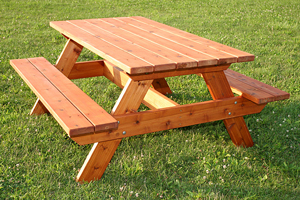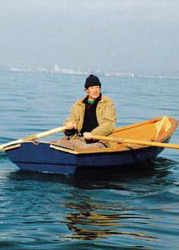
I recently made an outdoor picnic table, and deliberately left gaps between adjacent planks. The idea was to shed rain and let crumbs and other picnic debris fall through the cracks. Another reason might be to preserve and emphasize the look and feel of a plank table rather than obscure the joins by gluing it up.
Drift pins or drift folds are the same idea as wooden dowels, but are made of bronze, copper or other non-corroding metal. Iron drift pins were once widely used by boatbuilders to join up rudders, leeboards and other free hanging surfaces before the advent of modern glues. Drift pins made of iron will eventually rust, swelling as they do so and are likely to split the wood.
 I use a dowelling jig or dowelling centers to drill 5/16 or 3/8 holes in the edges of the boards to be joined. These holes must be about 1/64 inch smaller than the diameter of the pin so a twist bit is about your only option — unless you want to custom grind a spade or other type of bit. Whatever you use, be sure to experiment with hardwood scrap before drilling the tabletop.
I use a dowelling jig or dowelling centers to drill 5/16 or 3/8 holes in the edges of the boards to be joined. These holes must be about 1/64 inch smaller than the diameter of the pin so a twist bit is about your only option — unless you want to custom grind a spade or other type of bit. Whatever you use, be sure to experiment with hardwood scrap before drilling the tabletop.
Cut the pins to length — twice the thickness of the table top is a good guide — then drive them in one side only with hammer and hardwood block. Check with a bridging piece until they are a uniform depth.
Clamp up the top dry — no glue — putting wooden spacers adjacent to each pin so the gap will be uniform the whole length of the board. A light sanding to take the sharpness off the corners and you’re done.







